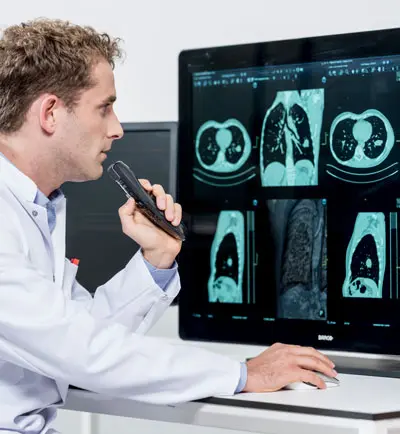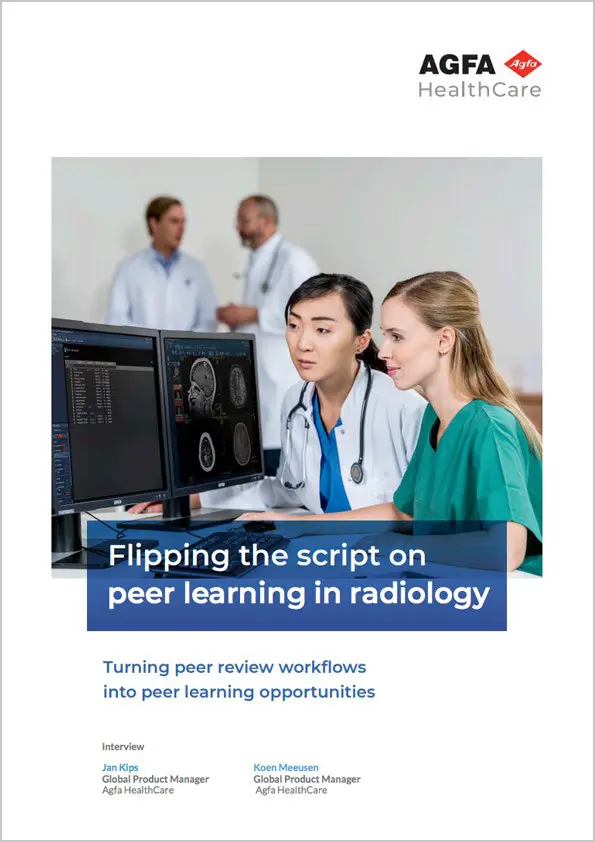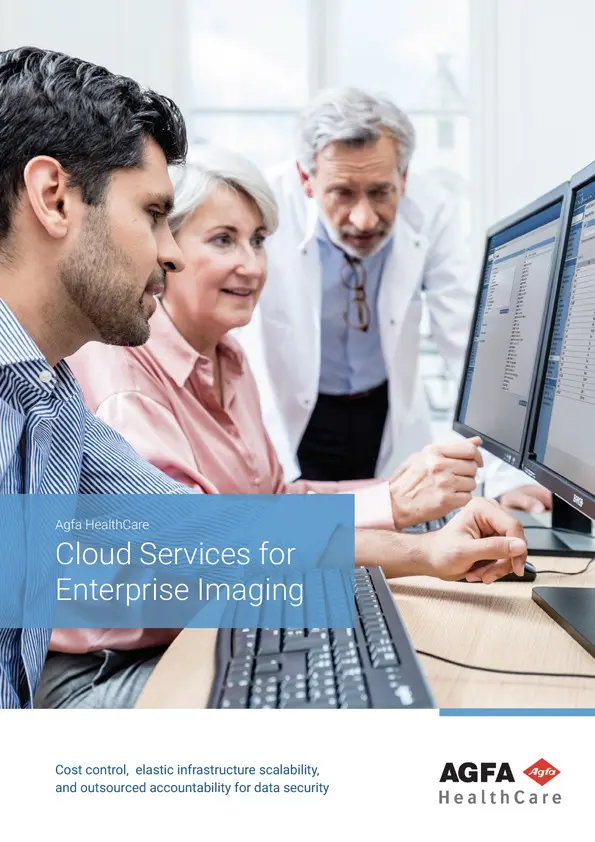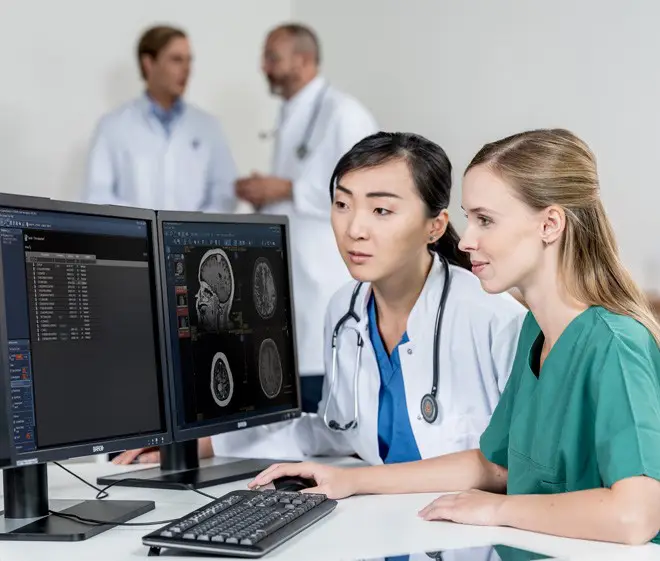Your new unified radiology platform, optimizing efficiency and resources
The future of medical imaging will be almost completely value-based and information-driven.
Agfa HealthCare’s Enterprise Imaging for Radiology offers a platform to drive the delivery of high-value services and patient care quality through the radiology department and beyond. Whether for a single department or a multi-facility network, you can make images easily accessible across the enterprise, while controlling system complexity, administration and costs.
For radiologists, this means a improved productivity, shared workflow across sites, better real-time collaboration, enhanced peer learning and a more visible role in the care continuum. On the system side, the consolidated platform lets IT/PACS administrators work efficiently while optimizing resources.
10 good reasons for Radiologists
1. A rules-based workflow that balances workloads
2. Collaboration for patient care
3. Peer learning in an open environment
4. Workflow oriented hanging protocols
5. Clinical applications – One Desktop
6. Seamless data exchange with your EHR
7. Embedded sectional reporting
8. Augmented Radiology, powered by AI
9. Remote reporting and workload optimization
10. Mobile image collaboration
5 additional good reasons
for the IT/PACS administrator
11. Less infrastructure complexity, more data security
12. Single point of entry for system administration
13. Maintain and manage image lifecycles
14. Room to grow
15. Cloud-ready
1. A rules-based workflow that balances workloads
Enterprise Imaging for Radiology’s native rules-based workflow engine helps you organize tasks and define priorities within sub-specialties, by modality and across shared institutions.
Full transparency makes it easy to balance workloads, even during the busiest times. Your workflow remains predictive and productive, tasks do not get missed, patient throughput is optimized, and results creation are accelerated to improve the delivery of patient care. The workflow engine is “native” in Enterprise Imaging, requiring no external orchestrator or application.
Workflow engines are highly customizable, which helps optimize tasks and makes workflows more robust. Furthermore, processes can be measured and improved upon with ease and efficiency.
2. Collaboration for patient care
Enterprise Imaging for Radiology puts collaboration, chat and share tools right in your desktop, keeping you connected with colleagues and peers. Live screen sharing allows multiple colleagues to see images and annotations in real time.
Easy and effective workflows allow users to organize and participate in multidisciplinary meetings, tumor boards and conferences, with schedules, rules, discussion tasks and participants all managed. Presentations can be prepared with snapshots, full screen layout, current image level and MPR reconstruction, and comments can be added for your later review.
Dual author reporting workflows enhance the teaching workflows with resident and attending physician workflows and a feedback loop

3. Peer learning in an open environment
Native Peer-Learning workflows permit qualitative review of reporting activities with links to scoring reports.
You can turn errors into opportunities: to share, collaborate, learn and progress. With a focus on understanding “how and why” an error occurred, you can encourage a positive mindset that is more open to learning, enabling a continuous improvement cycle.
In addition to sharing medical knowledge and best practices, you can create follow-up tasks at any point in the workflow, to build an improvement action plan.
Native teaching files, conference management and support for virtual classrooms help residents get the most from their learning experience.
4. Workflow oriented hanging protocols
Advanced hanging protocols replace the series-based hanging protocols to provide a consistent and predictable review workflow.
Hanging protocols in Enterprise Imaging for Radiology let you present studies and images in a consistent and predictable manner across modalities (regardless of vendor). You can easily create and modify them to your preferred way of working.
Dynamic Hanging Protocols allow users to define the view (layout), the content (DICOM Objects) and the behavior of the viewport (Stacked, Linked, MIP MPR 3D automated registration of comparative studies and more) and are presented in a sequential manner that is predictive and repeatable.
The automated comparative review gives you a holistic picture of the patient’s clinical situation, enabling you to create a report that supports greater diagnostic confidence.
5. Clinical applications – One Desktop
Enterprise Imaging for Radiology lets you extend the value of your diagnostic desktop with third-party post-processing tools and applications.
Your studies (including 3D and MIP/MPR) and clinical tools are available in a single desktop and viewer without switching workstation – for enhanced productivity.
Native Advanced imaging tools that span Radiology procedure types
- Automatic registration of comparative studies
- 3D, MIP and MPR
- CPR
- PET
- FUSION
- Orthopedic Measurement
- And more

6. Seamless data exchange with your EHR
Enterprise Imaging for Radiology integrates bi-directionally with your EHR to provide users easy access to patient images and data.
The Enterprise Imaging EHR viewer enables many of the native functions associated with the diagnostic desktop including advanced hanging protocols and image processing to drive the user experience.
More on the integration with your EHR : read the customer case of Zuckerberg San Francisco General
7. Embedded sectional reporting*
With sectional reporting, you can provide a standardized report structure that helps referring physicians quickly find what they need.
Findings are presented in natural, logical and consistent groupings to help the clinician with timely diagnosis and treatment.
Reporting functionalities embedded in the desktop offer you easy access to everything you need. When the images are loaded, just hit the record button on your microphone and begin dictating; you don’t need an additional word processor.
*Depending on your region and current speech technology installation, sectional reporting use cases may not be applicable to you.

8. Augmented Radiology, powered by AI*
The Enterprise Imaging Radiology ecosystem puts the potential of AI to work for you, that embeds best of breed AI applications, ensuring you a seamless experience.
Rules-based workflow engine enables workflow optimization and automation by analyzing standards-based meta data generated by regulatory cleared AI algorithms. Users would appreciate fast image analysis and improved turnaround times, reduced manual tasks, and automated case distribution based on results generated by AI algorithms.
You can focus your time and attention on activities that offer more value for your patients with AI enabled-decision support, and deliver more informed diagnosis and recommendations.
Find out more on the practical application of AI in Radiology
*AI features are a work in progress.
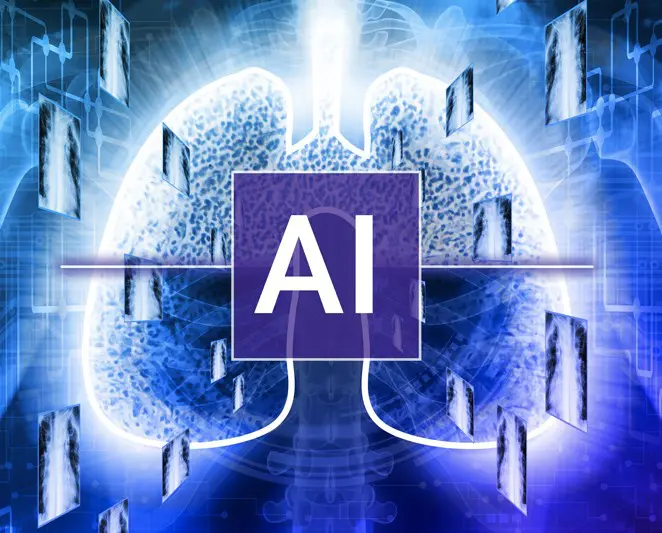
9. Remote reporting and workload optimization
Remote reporting and shared workflows let your team work from any location – with the same applications and processes they use at the hospital.
Radiologists can report remotely, with full access to the worklist and reporting tools. You can balance workloads across -sites, networks and regions, and provide fast imaging services 24/7, even in busy times, cost-effectively. Your ‘in-hospital’ best practices become the way of working remotely.
Read more on Remote reporting and collaboration
EI Engineered to support Remote Reporting:
- Same client application, same user experience regardless of location
- User defined workflows utilize a local cache to replicate LAN performance
- User can select studies from standard list and download to a local cache
- Automatic download worklist starts on login to further expedite workflow
- “Read ahead” display anticipates and prepare the next study for viewing
- User selected options to apply lossy/lossless compressions to active and/or prior exams
- Lower bandwidth situations can employ progressive display workflow for faster initial display
- Monitor activities to stay informed
- Escalate critical tasks automatically and manually
10. Mobile image collaboration
With the mobile device support, you can truly work on the go.
The FDA cleared XERO Viewer allows remote access to patient images and reports, using common browsers.
Radiologists and clinicians alike can use advanced image toolsets even when they aren’t on a diagnostic workstation.
Discover XERO Universal Viewer
The mobile functionalities include:
- Mobile reporting
- Mobile capture
- Mobile worklist
- Extensive search, filter, discovery functions
- Easy annotation, mark-ups, and more
- Patient-centric, thumbnail-enabled, interactive timeline

“I estimate that with Enterprise Imaging
reading and reporting is around 50% faster.”
Prof Dr Eric Achten, Ghent University Hospital.
5 good reasons for IT/PACS administrators
11. Less infrastructure complexity, more data security
By reducing the complexity of your consolidated architecture, Enterprise Imaging for Radiology helps you to control storage and migration costs, while supporting your facility to provide value-based care.
At the same time, you can expand the image management that you provide to different service lines. And with a single system to secure, you reduce the number of potential points of security failure, as well as the costs to protect your facility’s data and devices.
12. Single point of entry for system administration
A streamlined, uncluttered and intuitive interface offers you a single point of entry to all system administration activities.
Preloaded with recommended best practice configurations, it lets you work smoothly and efficiently while encouraging adoption by all users. Tools let you track performance, and prevent and troubleshoot potential issues, to protect your facility’s business continuity.
13. Maintain and manage image lifecycles
With native Image Lifecycle Management, multi-tier storage and study routing rules, based on your specific requirements, reduce your manual archiving tasks while supporting optimal use of your storage.
Multi-tier storage reduces costs, while meeting legal and regulatory requirements. At the same time, you provide better service to your radiologists, by speeding up the retrieval of priors, even across multiple locations.
14. Room to grow
The single, consolidated platform gives you the flexibility and scalability to meet the needs of a growing healthcare network.
Maintenance is standardized to further reduce total cost of ownership, and you can maximize the impact of your IT and staff resources and skills.
Read more about the Enterprise ImagingPlatform
15. Cloud-ready
Cloud storage for Enterprise Imaging offers you a long-term solution for your archiving, backup, data recovery and business continuity needs.
You can flexibly scale data storage to your requirements, even as they change.
Physicians and healthcare providers have consistent and continuous availability to the image data they need, without requiring you to constantly focus your time and resources on defending against data breaches, outages or data loss. Finally, you know your costs in advance, and can control them.
More about Cloud Services
Featured solutions
Customer Cases
Start your transition to Enterprise Imaging for Radiology


